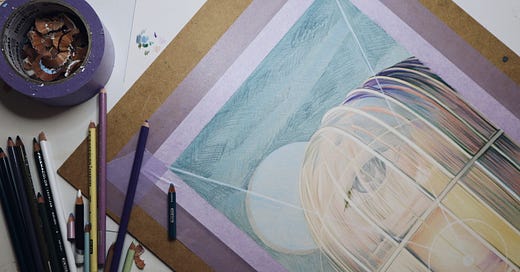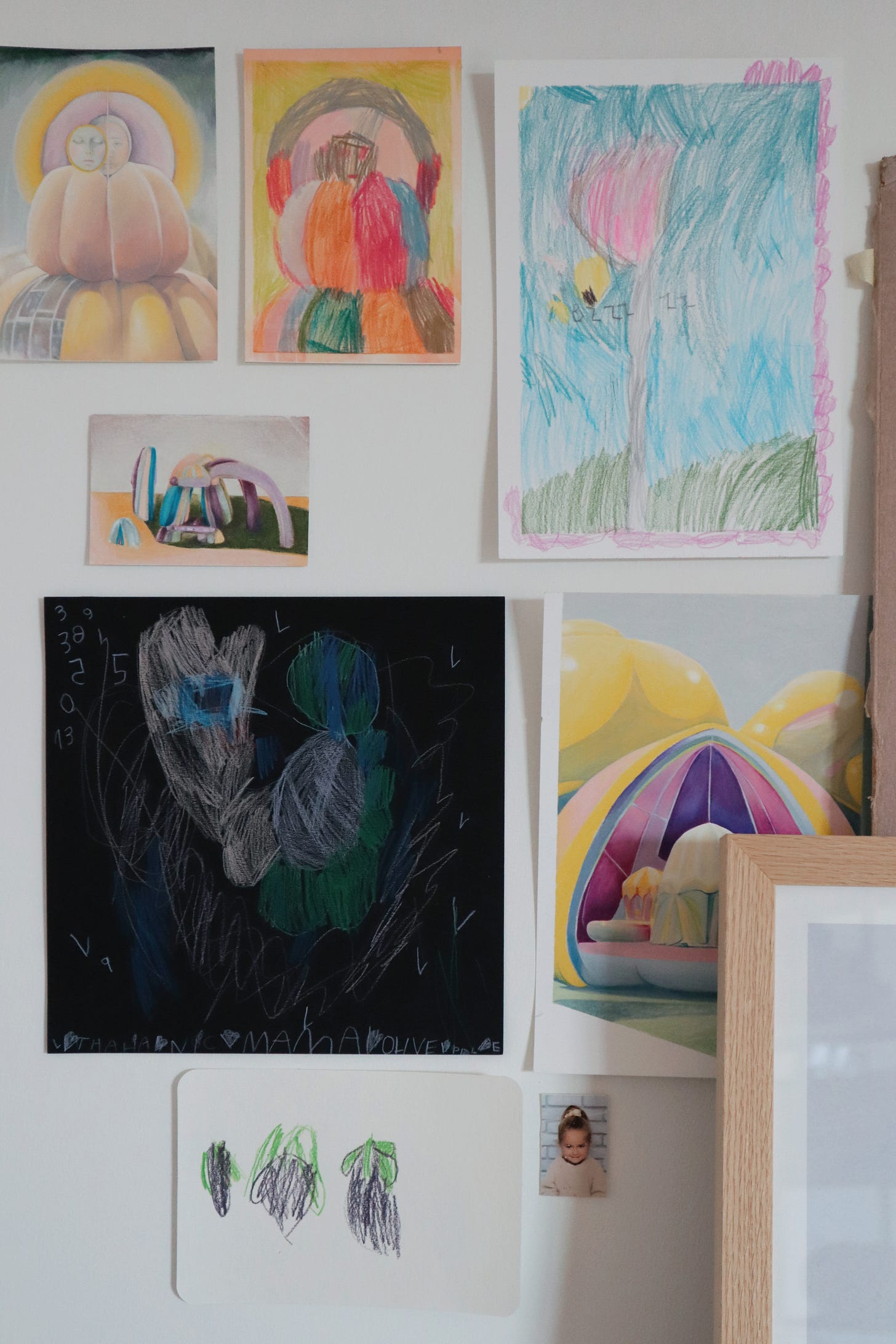I’ve always been drawn to precision. Not consciously, or in all areas of my life, of course (those who know me well will understand this caveat). But my drawings, like most things aesthetic, lean toward the meticulous. There’s something soothing about the control—the meditative clarity of repetition and taming chaos into form. Very Virgo of me, I am acutely aware.
Lately, though, I’ve felt an itch to let go a little—to loosen my lines and embrace imperfection. This isn’t a new urge; during my master’s, I spent two years trying to ‘unlearn how to draw’ (encouraged by my mentors Peter Nelson and Joan Ross). My practice traverses between resolved and more dynamic. But letting go and returning to a looser approach feels like stepping into the unknown. It’s exciting, but also… a little terrifying.
Why the shift? Well, besides the fact that I’ve been looking at my daughter’s drawings that are taped by my desk in awe. I think it’s about reflecting the themes expanding in my new works. The pieces continue to explore the idea of sanctuaries—but more towards places of survival, resilience, and regeneration—and I want the drawing process to echo those ideas. Looser lines feel alive, like they’re still finding their form, still moving and breathing. They’re less about the finished sanctuary and more about the sanctuary in flux—fragile, imperfect, full of energy and potential.
Every instinct pushes me to blend, refine, and smooth anything a little unhinged or unsettled. But I’m trying a few things: focusing on directional energy, layering lightly to let the underlayers peek through, and resisting the urge to overwork. I’m also working in short bursts—ten minutes between client tasks or before school pick-up—rather than spending hours in the zone.
In the drawing I'm working on at the moment, an open door radiates light. I’m letting that light feel smooth and refined, while other areas remain freer. It’s an experiment in balance: control at the center, energy expanding outward. In my process, as much as I can, I aim to mirror the themes of my work. Resilience isn’t neat or polished; it’s disorderly and agile, constantly adapting to disruption. Sanctuaries, too, aren’t always pristine havens—they’re often imperfect and evolving, shaped by the environment around them, the conditions and community they hold.
It is as much a conceptual shift as a technical one. A reflection of life as it is—unresolved, full of tension, and also full of possibility and hope. So here I am, yet again, trying to unlearn years of perfectionism. It’s playful, fun, and uncomfortable—which is exactly the point. For now, I’m leaning into that discomfort, curious to see where it takes my work.






Beautifully written. I have been struggling with adjusting to balancing motherhood and my studio practice. I’ve just recently (as in this week) realized I need to adjust my ways in the studio a bit and learn a new routine and to open up to mistakes and playfulness in my art more than I did before. Painting alongside a toddler can be a little chaotic. Although he is not yet even two, I can still learn from my little one as well.
The first time I attended a human dissection workshop, I returned to teaching Pilates afterward, only to realize I no longer knew how to teach the same way. My perspective on the human body had completely shifted—it was a profound and transformative experience. That moment of uncertainty became my greatest lesson, reminding me that unknowing paves the way for growth and new possibilities. XOXO Carla